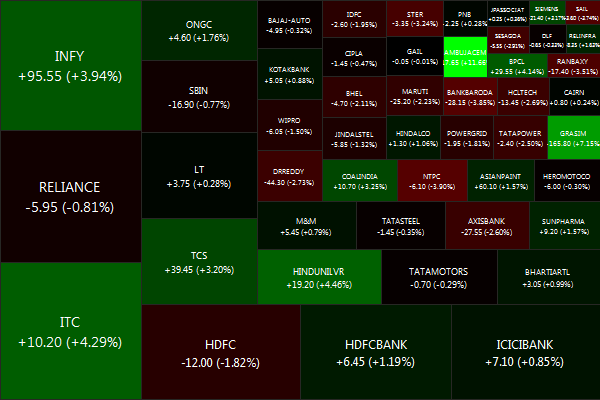The NIFTY ended on a bullish note, shooting up +1.58% for the week.
Biggest losers were NTPC (-3.72%), BANKBARODA (-2.96%) and DRREDDY (-2.59%).
And the biggest winners were AMBUJACEM (+11.99%), GRASIM (+7.73%) and BPCL (+5.73%).
Advancers lead decliners 28 vs 21
Gold: +2.74%, Infrastructure: -2.26%, Banks: +1.23%.
The markets had enough things to worry about: weekend elections in Greece, slowing global growth, domestic stagflation and policy paralysis. Even though 2012 is mirroring most of 2011, what’s different this time is slowing BRIC growth. The BRICs contributed about half of the international expansion since 2007 but are facing rising headwinds this year. Investors have moved out of emerging market equity funds, India’s 5.3% expansion in the first quarter was the weakest in nine years, Brazil managed a tepid 0.8% even after cutting interest rates and taxes, Russia is forecasting a 4% growth rate as output of oil, the nation’s biggest export, stagnates, and China is targeting growth of 7.5% this year. (Bloomberg)
Have a nice weekend!
Daily news summaries are here.





